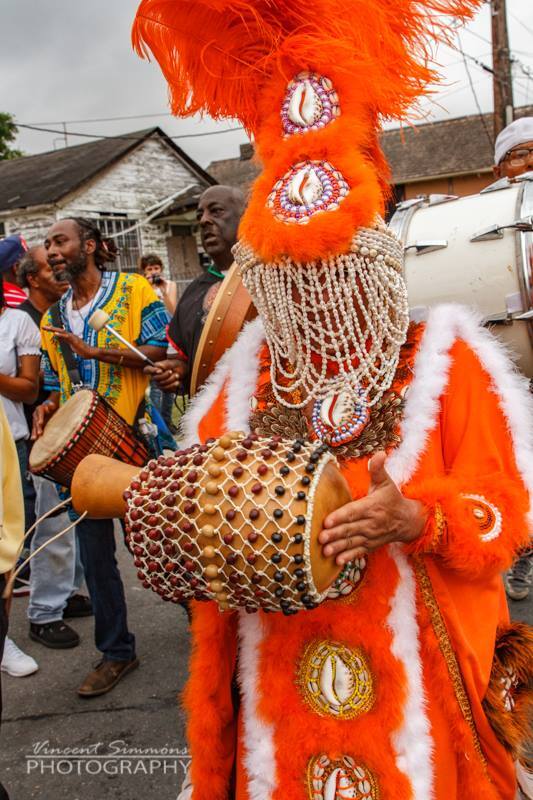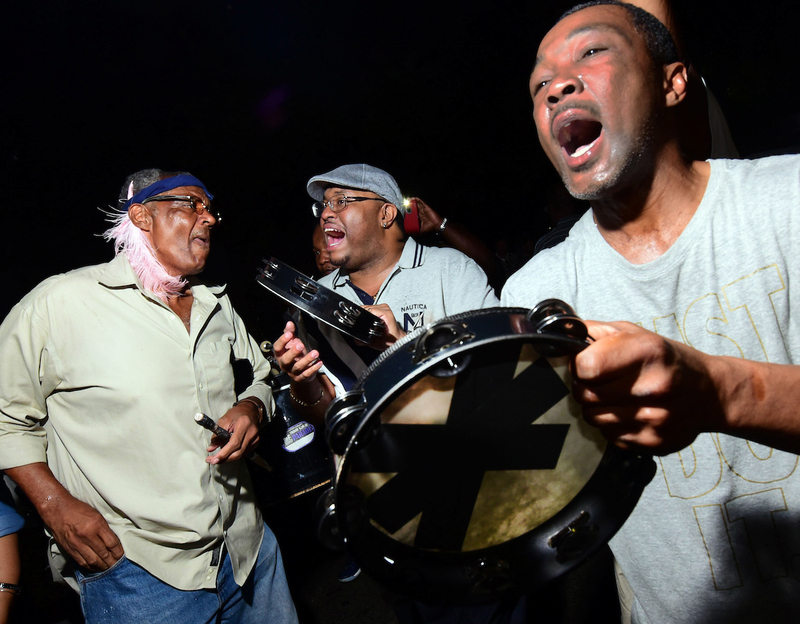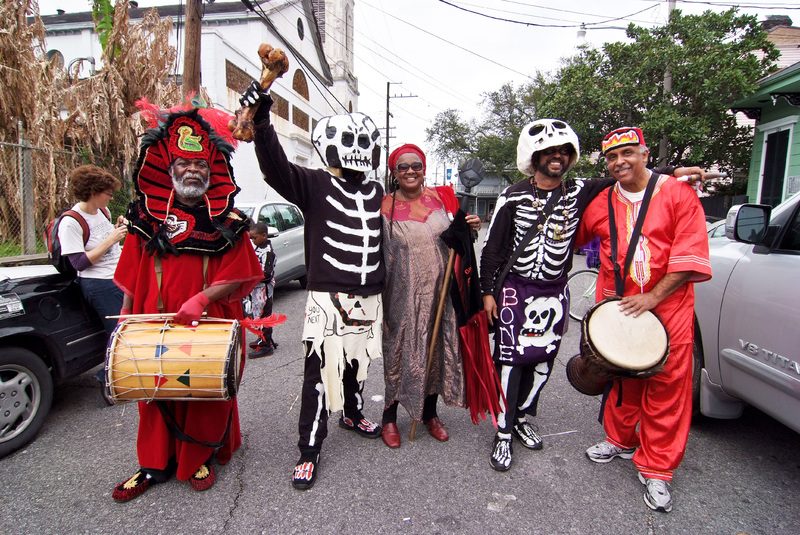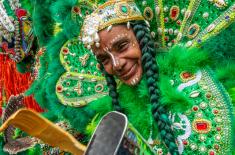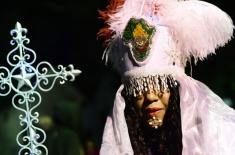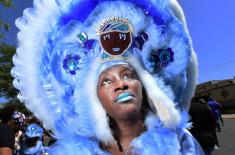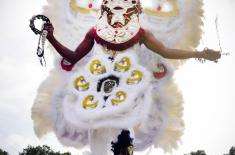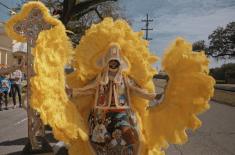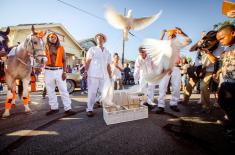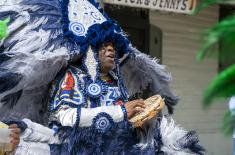Music, Dancing, and Chanting
Mystery in Motion: African American Spirituality in Mardi Gras
Drumming, chanting, and dancing are integral parts of African American masking. The rhythms, moves, and motives of their performances trace back to Congo Square, where enslaved Africans were permitted to congregate on Sundays in the eighteenth and nineteenth centuries to market their goods, worship their gods, play their music, and perform dances like the bamboula and the calinda, which were closely associated with Voodoo and far more athletic and free-form than ballroom dances like the cotillion and waltz, which were popular in New Orleans. Congo Square was a place where Old World culture and New World influences intersected, where African culture became African American culture.
The sounds and music of Congo Square were also distinct. You’d be likely to hear the practice of call and response, a communal feature of African cultural life in which one person takes the lead of the melody and calls the others to respond. This format encouraged the individual expression and improvisation that ultimately evolved into jazz and other types of contemporary music. Underscoring the music of Congo Square were African beats like the 3+3+2 pattern that was played on the bamboula (a type of drum), which also became the name of a specific dance. The bamboula beat can still be heard in popular New Orleans music based on Black masking Indian chants, like “Hey Pocky A-Way” and “Iko Iko.” The beat is also found in international pop music, such as George Michael’s “Faith.”
The legacy of Congo Square music and dancing forms an important part of Black masking culture. Year round, the maskers practice their fancy footwork to drum-and-tambourine percussion ensembles. And they chant, riffing on a common repertoire. Practices—most often held in neighborhood bars—begin and end with the most sacred of Black masking hymns, “Indian Red.” Other common songs—all performed in call-and-response fashion—include “Shallow Water,” “Golden Crown,” and “Sew-sew-sew.” Chiefs and other members also constantly improvise new chants. The music, dancing, and chanting serve as the foundation for the spiritual public performances on Mardi Gras and St. Joseph’s Night and during Super Sunday parades.
Mystery in Motion: African American Spirituality in Mardi Gras
Online Exhibition
